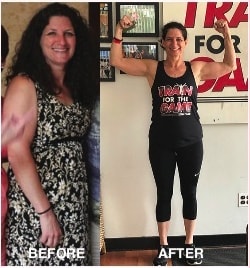From elementary schools to the Olympics, questions abound about trans athletes, fairness, and equality, a topic we discussed last year, with insight from the clinicians in the Gender Multispecialty Service (GeMS) at Boston Children’s Hospital. But kids and their parents aren’t the only ones who might find themselves faced with these concerns. Indeed, as student athletics resume this year, there are still a lot of questions for schools and coaches as well, says LB Moore, a clinical research assistant at Boston Children’s, clinician, and a former coach.
“You can have a trans-affirming culture at your school, but the sport culture more broadly can present challenges,” explains Moore, who uses they/them or ze/zir pronouns. “Coaches often end up playing the role of counselor and confidant. Even if you only interact with a student as an athlete, you’re a huge part of their support system.” Here, Moore offers additional insight for schools and coaches.
1. Act now.
Don’t wait until you have a gender-diverse child on your team — and don’t assume that you don’t have one now. “If you’ve been coaching for more than 10 minutes, you’ve probably already coached a trans or non-binary athlete — whether you know it or not,” says Moore. For this reason, all coaches should work with their schools to establish an approach to gender-diverse athletes before issues arise.
Including trans athletes means considering your team’s culture, school and sport policies, rules regarding uniforms, locker room access, and more. There are some aspects that you won’t have as much control over: “A lot of students will say that their own team is awesome, but that doesn’t stop the opposing teams from making transphobic comments or refusing to play against them,” says Moore. “Coaches may have less power in some cases, so focus on what you can help change — yourself, your team, your school, your conference.” There are also legal resources available to help, such as glad.org.
2. Educate yourself.
In addition to language, general gender-affirming practices, and relevant inclusion policies, it’s important to educate yourself about binding, tucking, cups, and other gender-affirming gear that your athletes may use. That doesn’t mean you should question a player about whether or not they use such tools, says Moore. But you’ll want to learn about the physical needs your trans or non-binary players might have — whether a chest binder could affect their ability to breathe deeply, for example — and have resources (like transstudent.org) at the ready if they do ask for help.
3. Improve equity for all students.
One of the best things that coaches can do for athletes is to increase fair access to sports for everyone, says Moore. “Look at how we socialize play in young children: We hand a cisgender boy a ball and a cis girl a doll — we’re already creating inequity of movement-related experience,” they explain. “If we eradicate sexism and other forms of inequity — like racism and ableism — from society and sport, everyone wins. We would have more youth engaging in physical movement and sport, and more fully.”
4. Check your gendered language.
You could be fostering an unwelcoming environment for trans and non-binary players without even knowing it. “If you coach a ‘girls’’ team, do you say things like, ‘All right, ladies, bring it in’?” asks Moore. “Do you call your boys’ team athletes ‘girls’ when they aren’t playing well? Make sure the words you use with your team are inclusive to everyone.” Wondering how to refer to your athletes? Try “team,” “folks,” or your team mascot — “All right, Wildcats, bring it in!”
You can get to know the language that specific students need. Youth are increasingly familiar with sharing their pronouns as part of introductions or in conversation with trusted adults, like coaches. “Modeling is a huge part of coaching, so I include my pronouns when I introduce myself, too,” says Moore. By practicing inclusive language use, you are signaling to students that your team might be a safe place to be themselves.
5. Have a support system.
Coaches can help move the dial by rigorously advocating for trans-inclusive policies to the governing bodies of their sport and directing concerned parents to those policies. But you shouldn’t have to go it alone. “I want to know that I have people up the chain who can have those conversations alongside me,” says Moore. They recommend building a support system of affirming coaches, administrators, and other peers who have successfully advocated for trans and non-binary athletes.
6. Remember what really matters.
Look around a Little League field or youth hockey rink and it isn’t hard to see that sports have become a battleground of perceptions about children’s success in life. “Our cultural obsession with competitive advantage wouldn’t be so strong if we were less focused on competition and winning,” says Moore. “Just like cis athletes, there are plenty of mediocre trans athletes, myself included. We just want to play sports and have fun.”



